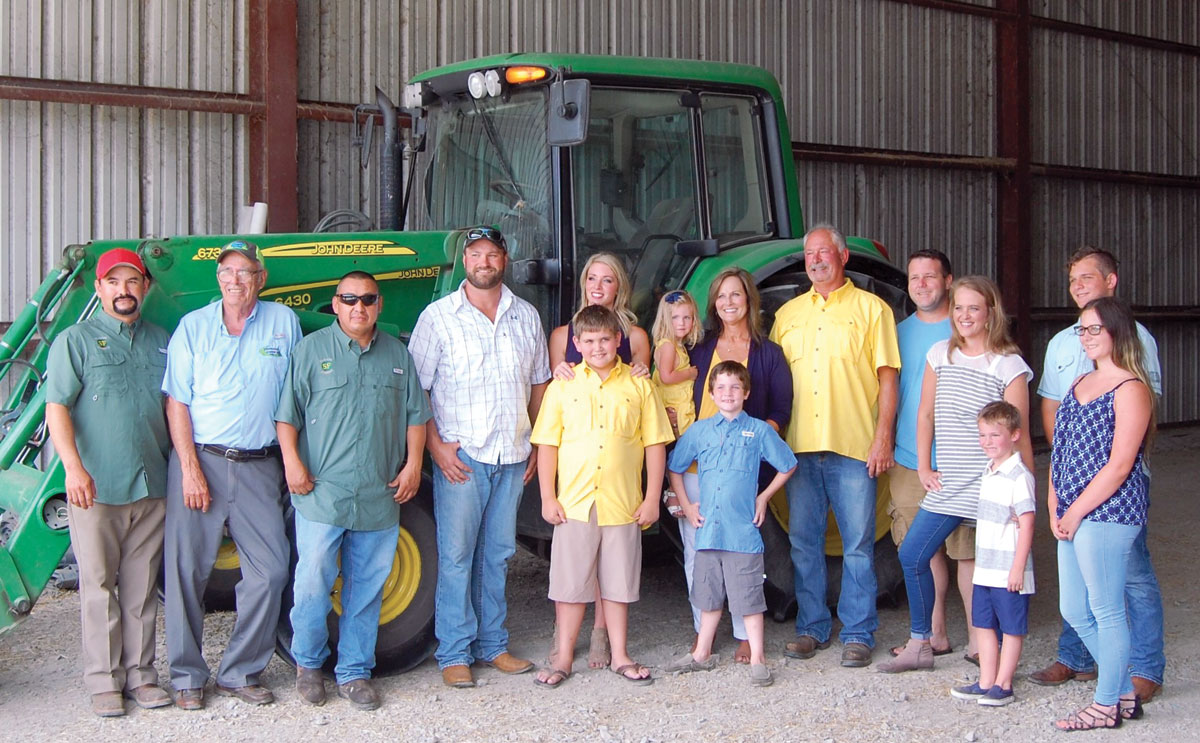
The quality and success of any cattle operation depends on the animal science knowledge of the owner as much as it depends on the marketing of their beef program. The sales or services can vary through production/consignment sales or through a private treaty.
“We are Charolais seedstock producers. Our focus, here at Fox Hollow Farms, is on sound and functional seedstock for commercial cattlemen as well as purebred breeders. We rely heavily on artificial insemination (AI) and embryo transfer (ET) to select the premier genetics from across the nation. We have a small herd, based on proven genetics and catered to specific customers,” said Stephen Mellott of Catoosa, Okla., located in Rogers County. Stephen also markets his seedstock program through private treaty sales.
Stephen and his wife, Michal, became seedstock producers by starting their own herd in 2008. “My family started raising Charolais cattle in the early ‘80s, so I grew up with them. They showed Charolais all over the United States. I made a lot of friends and enjoyed working the cattle growing up. I searched for docility, along with other heritable traits, because I needed to make sure my family could work safely around the herd in case I was not available. I want my girls, Lilly and Madeline, to enjoy the same experiences as they grow up,” he stated.
The Charolais breed originated in France. They are known for their docility, large muscles, meat and harmonized qualities, especially when crossed with Angus and Hereford breeds. Continental genetics influence the production of higher quality beef and use less resources such as forage. The bulls can weigh up to 2,400 pounds while the cows can weigh up to 2,000. The breed was introduced in 1934 infiltrating the southern parts of the United States. Crossbred steers won a host of awards at a San Antonio Livestock Show in 1971. They were recognized for their steer prominence and carcass values. Breeding with Charolais bulls adds the hybrid vigor of weight to the calves, which yields higher weight at sale time.
Their cattle crop are set to calve in the spring, which enables them to rotate pastures year round. “We keep stocking rates around 1 1/2 to 2 acres per cow,” he said. Their cattle primarily eat grass and hay but do supplement in the winter months with a mix of grains and feed containing up to one and a half pounds of protein each day, per cow. “Because we wean in the fall, we grow out our calves through the winter. We feed our bulls a high roughage ration,” he added. Management of winter pasture feeding for mature bulls is primarily the same as for the cowherd.
“The bulls we sell are expected to perform on limited input, so feed efficiency and conversion is a must. Our cattle have to perform on grass. The bulls are in demand now more than ever,” said Stephen.
Stephen bales his own hay and also on shares. Generally, he gets six to seven months of nutritious grass pasture each year. The rotational grazing is a modified version to optimize grass production and conserve resources. The spring fed ponds and rural water furnishes the adequate supply needed for the herd.
They have one ranch hand to help on the farm due to the farm demands. Stephen and his ranch manager work an average of more than 50 hours a week taking care of everything needing attention on the ranch, including spraying for weeds.
They also have a reliable network of veterinarians should they encounter problems with the herd. “Depending on the issue, our local vet is a good resource. Because of our reliance on AI and ET, we have a good relationship with several different veterinarians.”
Stephen also works at a steel fabrication company in Tulsa that builds large process equipment for oil refineries.
When it comes to balancing family and work, “Fortunately, I’ve been able to make everything work, but quite often there isn’t a balance,” concluded Stephen.







